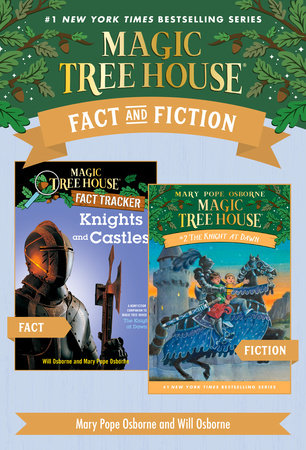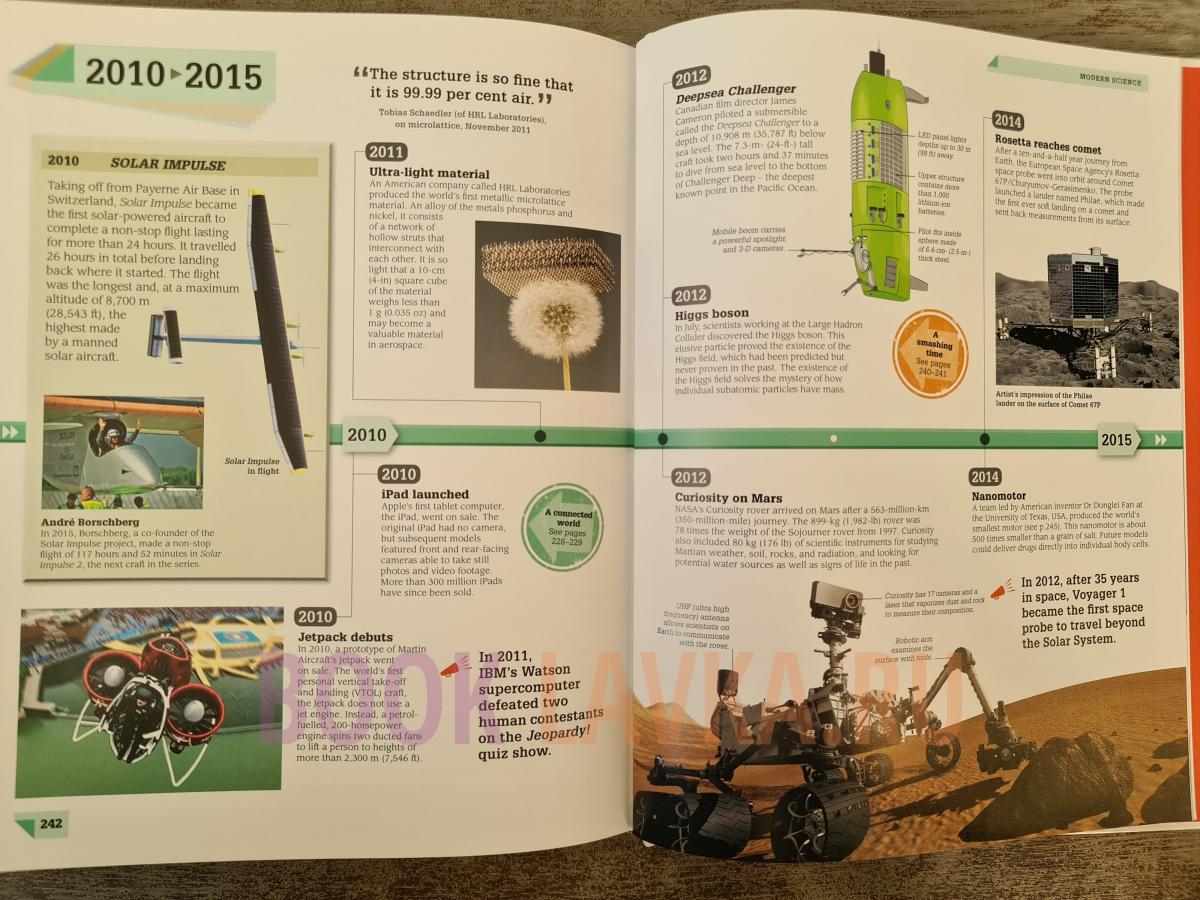Discover Pandipedia
Pandipedia is the world's first encyclopaedia of machine generated content approved by humans. You can contribute by simply searching and clicking/tapping on "Add To Pandipedia" in the answer you like. Learn More
Expand the world's knowledge as you search and help others. Go you!

Bamboo shoots are used in a variety of Asian dishes. They can be enjoyed boiled, canned, or added to recipes like stir-fries[1], curries, soups, and salads. They have a crisp texture and mild[1], earthy flavor that adds a unique taste to the dishes. Bamboo shoots are typically peeled before consumption as the exterior has a woody[1], thick texture that can be difficult to chew[1]. They can be found in various forms, including dried, fresh, or canned. Before using bamboo shoots in recipes, they are often boiled, soaked, cooked, or pickled to enhance their flavor and texture (Healthline).
Let's look at alternatives:
- Modify the query.
- Start a new thread.
- Remove sources (if manually added).
- Request a manual search from our human research team.

Modern automatic cars often compete with manuals in fuel efficiency. While traditionally manuals were considered more fuel-efficient, advancements in automatic transmissions, especially continuously variable transmissions (CVTs), have changed that perception. Today's automatics can achieve better or similar fuel economy due to their ability to continuously vary gear ratios and have more forward gears, which helps keep the engine within its optimal RPM range. For instance, automatic cars are designed to select the right gear without driver input, which can lead to better fuel savings[2][4][5].
Overall, in most cases, automatic cars actually use less fuel than their manual counterparts, making the choice less about fuel efficiency and more about personal preference[4][3][1].
Let's look at alternatives:
- Modify the query.
- Start a new thread.
- Remove sources (if manually added).
- Request a manual search from our human research team.
Get more accurate answers with Super Search, upload files, personalised discovery feed, save searches and contribute to the PandiPedia.

Thermodynamics is a fundamental branch of physics that governs the relationships between heat and various forms of energy. Its principles are evident in a multitude of everyday situations, influencing both the way we interact with our environment and the functionality of numerous technologies we often take for granted.
The First Law of Thermodynamics

The first law of thermodynamics, also known as the law of conservation of energy, asserts that energy cannot be created or destroyed, only transformed from one form to another. This principle manifests in numerous daily activities and technologies. For instance, when heating water in a bathtub, the heat from the water transfers to the body's cooler surface until thermal equilibrium is reached, illustrating energy transfer between two systems[7]. This process is also evident in metabolism; when we consume food, our bodies convert the chemical energy stored in macronutrients into kinetic and thermal energy necessary for movement and maintaining body temperature[3].
Practical Examples
Melting Ice Cubes: When an ice cube is left out, it absorbs heat from the surrounding air, leading to its melting. This demonstration shows heat transfer, where heat is drawn from the warmer air into the colder ice[7].
Heating Systems: A typical home heating system utilizes electrical energy to produce heat. When the heater is activated, electrical energy passes through a heating coil, converting into heat energy, which in turn raises the temperature of the water flowing through it[7].

title: 'home water heater' and caption: 'a water heater in a attic'
These examples illustrate how the first law governs energy transformations in everyday scenarios and technological applications.
Refrigeration and Cooling Systems

The principles of thermodynamics also underpin refrigeration technology. In a refrigerator, heat is removed from the internal environment to create a cooler space for food storage. This system employs a refrigerant that absorbs heat from the compartment and releases it outside, using energy from an external source (like electricity) to operate the compressor that facilitates this heat transfer. Thus, although the refrigerator removes heat from the cool interior, it does so by expending energy to transfer it elsewhere, consistent with the first law of thermodynamics[5][7].
Moreover, air conditioning units function similarly, maintaining comfortable indoor temperatures by extracting heat from the air and dispersing it outside. The back of an air conditioner gets warm because it is redistributing the heat it removes from inside the space it cools[5].
Cooking and Thermal Dynamics

Cooking is another domain where thermodynamics plays a pivotal role. Common practices, such as boiling vegetables, rely on consistent temperatures to achieve reliable cooking outcomes. As stated, water boils at approximately 100°C under standard atmospheric conditions, and precise temperature control is crucial for replicable results in cooking[6]. For instance, boiling water ensures that vegetables reach a particular texture and flavor, leveraging the thermal properties of water to provide consistent heat transfer.
Additionally, the process of heat transfer in cooking foods like potatoes demonstrates the importance of thermal conductivity. When a potato is submerged in boiling water, heat flows into the potato, causing its starch granules to gelatinize at around 60°C. This phenomenon is essential for changing the texture of the potato, highlighting how thermodynamic principles govern not just energy transformation but also the chemical properties of food[6].
The Concept of Temperature and Equilibrium

The zeroth law of thermodynamics further explains how temperature scales are defined and applied in everyday life. It establishes that if two objects are in thermal contact with a third object, they are in thermal equilibrium with each other. This is fundamental for temperature measurements, as seen in common thermometers and HVAC systems, ensuring comfortable indoor environments by comparing internal temperatures to setpoints[4].
Moreover, in the culinary world, achieving thermal equilibrium is vital for food safety and proper cooking. For instance, the Zeroth Law ensures that all parts of a dish reach the desired temperature, which is critical for both safety in eliminating harmful microorganisms and achieving the intended taste and texture[4].
Thermodynamics in Energy Consumption and Efficiency

Thermodynamic principles also influence design and efficiency in various technologies. In electric power plants, heat engines convert thermal energy from fuels into electrical energy, demonstrating the first law through the transformation of energy forms. This process is inherently inefficient due to entropy, as some energy is always lost as heat; however, improved designs have enhanced efficiency significantly over time[3][7].
From the engines in our vehicles to the heating systems in our homes, thermodynamic principles guide the design and operation of machines, ensuring we maximize efficiency while minimizing wasted energy. For instance, understanding friction and heat loss is crucial for engineers when designing efficient heat engines and heating systems, as these factors determine overall performance[1].
Conclusion
In summary, thermodynamics profoundly influences our daily lives through its laws governing energy transfer and transformation. From simple actions like melting ice to complex systems like refrigeration and cooking, the principles of thermodynamics are not only foundational to understanding natural phenomena but also crucial for the effective functioning of numerous technologies we rely upon every day.
Let's look at alternatives:
- Modify the query.
- Start a new thread.
- Remove sources (if manually added).
- Request a manual search from our human research team.

Rachael Gunn, known as B-girl Raygun, qualified for the Olympics by winning the 2023 Oceania Breaking Championship held in Sydney. This event allowed participants from Australia and New Zealand to compete, and Gunn won her battles decisively, securing her Olympic spot[1]. Her standout performance also showcased her unique dance moves, contributing to her viral fame, which further aided her selection to represent Australia at the Paris Olympics[2][3].
Let's look at alternatives:
- Modify the query.
- Start a new thread.
- Remove sources (if manually added).
- Request a manual search from our human research team.
Overview of Agent Systems

Agent systems represent a new generation of AI-powered applications where large language models (LLMs) manage complex workflows with increasing autonomy. In these systems, an 'agent' is defined as an LLM that dynamically directs its own processes and tool usage, maintaining control over its actions as it processes input and interacts with external systems. Unlike predetermined workflows, where steps are hardcoded, agents have the flexibility to make decisions and take actions in an open-ended manner based on the context provided. This concept is underscored in Anthropic’s discussion on building effective agents, which emphasizes the importance of simplicity and composability over excessive complexity[1]. The agents’ effectiveness is further enhanced by incorporating augmentations such as retrieval, tool integration, and memory, all of which are designed to be tailored to specific use cases while maintaining a clear interface for the LLM[1].
Single-Agent Systems
Single-agent systems are built around a solitary agent that is enhanced with various tools and features to handle a range of tasks. According to the practical guide, a single agent is capable of managing multiple responsibilities by incrementally adding tools, guardrails, hooks, and well-defined instructions. The idea is that one agent can be equipped with a broad set of functionalities, such as retrieving context, performing actions via APIs, or even handling tasks that typically require multi-step human decision-making. This approach has the advantage of simplicity, making it easier to manage the decision-making process and maintain clear control over input and output. In practice, a single-agent system involves clear guidelines that delineate the agent’s actions. For example, the guide notes that each new tool expands the agent's capabilities without necessarily requiring the development of additional agents, thereby keeping the system lean and easier to debug and evaluate[2]. Additionally, integrating proper input and output protocols ensures that each step in the workflow is deterministic and can be retraced if errors occur. Overall, the single-agent architecture is suitable for many applications where the complexity does not justify a multi-agent orchestration.
Multi-Agent Systems
Multi-agent systems represent an evolution when task complexity increases or when challenges such as diverse functionalities and scalability arise. In this architecture, multiple specialized agents work either under a centralized manager or as decentralized peers. The practical guide outlines two primary categories of multi-agent systems. The first is the manager pattern, where a central agent (the manager) orchestrates the activities of several specialized agents, each designed to perform a particular task. For instance, in a translation scenario, the manager may delegate to separate agents responsible for different target languages. This pattern allows for flexible orchestration, where the manager intelligently assigns tasks based on the current context and synthesizes the outputs of individual agents into a unified response[2].
In the second category, agents operate in a decentralized pattern. Here, each agent functions as both an independent executor and a collaborator with its peers, handing off responsibilities as needed. This peer-to-peer model is useful in scenarios where tasks can be described as a series of interdependent steps that benefit from parallel processing. The guide explains that decentralized multi-agent systems can be modeled as graphs, with the agents serving as nodes and the transitions (or handoffs) as edges. Such a setup can be particularly effective in applications where specialized knowledge or functionalities are distributed across multiple tasks, such as in complex customer support workflows that require technical troubleshooting, sales assistance, and order tracking[2].
Practical Considerations and Best Practices
When deciding between single-agent and multi-agent systems, developers are advised to start with the simplest approach possible and then introduce complexity only when necessary. As noted in the Anthropic article, agents may trade off latency and cost for improved overall performance, so it is crucial to identify when increased flexibility is needed versus when a single-agent solution might be adequate[1].
For single-agent systems, the focus should be on clear, structured instructions that guide the agent’s decision-making process, along with the careful integration of tools and guardrails to ensure reliability. The guide stresses the importance of prompt engineering and the careful documentation of tool interfaces, as errors in these areas can lead to significant operational issues[2].
In multi-agent systems, best practices include using a manager agent to coordinate multiple specialized agents or employing a decentralized handoff mechanism among peers. This requires meticulous design of inter-agent communication and role allocation. The manager agent is often responsible for synthesizing the outputs of individual agents so that the final response remains coherent and aligned with user expectations. Guardrails become even more important in these systems to mitigate the risk of compounding errors across various agents. Additionally, practical guidelines suggest limiting the number of agents to those that provide distinct functionalities to avoid unnecessary complexity and potential overlaps[2].
Both approaches benefit from iterative testing, precise error handling, and built-in triggers for human intervention. As systems grow, human oversight plays a crucial role in ensuring the reliability and safety of these autonomous processes. Overall, while single-agent systems are easier to implement and manage, multi-agent systems offer enhanced flexibility and scalability when faced with complex or multiphase tasks.
Conclusion
The choice between single-agent and multi-agent systems largely depends on the complexity and specificity of the task at hand. Single-agent systems provide a streamlined and efficient solution for many applications, integrating various tools and guardrails within a single flexible framework. In contrast, multi-agent systems allow for a division of labor where specialized agents can operate either under centralized management or in a decentralized network, thereby handling more intricate or varied workflows. Both architectures require careful design considerations, including clear tool documentation, prompt engineering, and robust safety mechanisms. By following these principles, developers can build systems that not only achieve high accuracy and performance but also maintain reliability and ease of maintenance. This comprehensive approach to agent design, as highlighted in both Anthropic’s discussions and the practical guide, demonstrates how evolving LLM capabilities can be effectively leveraged to create versatile and resilient AI-powered systems[1][2].
Let's look at alternatives:
- Modify the query.
- Start a new thread.
- Remove sources (if manually added).
- Request a manual search from our human research team.

Here are some fun facts about JavaScript:
JavaScript was created by Brendan Eich in 1995 during a brief 10-day development period and was initially named 'Mocha,' later becoming 'LiveScript,' and finally 'JavaScript' to capitalize on the popularity of Java[1][2][5]. Despite the name, JavaScript is not directly related to Java and is designed as a lightweight, prototype-based language for adding interactivity to web pages[2][5]. JavaScript treats functions as first-class citizens, allowing them to be assigned to variables, passed as arguments, and returned from other functions, enhancing modularity and code reusability[2].
JavaScript is primarily known for its role in client-side web development, executing in the browser to enable dynamic interactions. However, with Node.js, it has expanded to server-side development, enabling full-stack applications using a single language[5]. The language is dynamically typed, meaning variables can hold values of any type, and it supports both functional and object-oriented programming paradigms[5].
JavaScript uses asynchronous programming techniques, including callbacks, promises, and async/await, allowing it to handle time-consuming operations without blocking other code execution[2][5]. Additionally, an interesting quirk of JavaScript is that NaN (Not a Number) is considered a unique value that is not equal to itself[3]. The language has a rich ecosystem, consisting of numerous libraries and frameworks like React, Angular, and Vue.js, which enhance development productivity[5].
Overall, JavaScript is a foundational component of the web, with over 95% of websites utilizing it today[1].
Let's look at alternatives:
- Modify the query.
- Start a new thread.
- Remove sources (if manually added).
- Request a manual search from our human research team.
Get more accurate answers with Super Search, upload files, personalised discovery feed, save searches and contribute to the PandiPedia.

Companion planting is the practice of planting different crops in proximity for various reasons, including weed suppression, pest control, pollination, providing habitat for beneficial insects, maximizing space, and increasing crop productivity. It is a form of polyculture and is utilized by farmers and gardeners worldwide for its benefits, such as potentially reducing the need for artificial fertilizers and pesticides. The technique has historical roots, with various indigenous peoples and early agricultural societies employing methods that align with modern companion planting principles. The interactions between plants in companion planting can be both positive and negative, affecting crop yields and pest management in complex ways[1].
Let's look at alternatives:
- Modify the query.
- Start a new thread.
- Remove sources (if manually added).
- Request a manual search from our human research team.

Interesting Facts For Curious Minds
A collection of 1572 random but mind-blowing facts about history, science, pop culture, and more, organized into 63 chapters which make for easy reading and sharing with others[1].

The Book of Unusual Knowledge
A 704-page hardcover filled with intriguing information on diverse topics, including arts and technology, sure to captivate curious minds[1].

Sibley Birder’s Trivia
An ultimate card game for birders featuring 400 questions about North American birds, making learning about avian knowledge fun and engaging[1].

What If?: Serious Scientific Answers to Absurd Hypothetical Questions
A humorous and informative book answering absurd questions with logic and science, embellished with stick-figure comics[1].

What If? 2: Additional Serious Scientific Answers to Absurd Hypothetical Questions
A follow-up to the first book that provides even more entertaining scientific explanations to silly contemplations[1].

The World Almanac and Book of Facts 2023
A comprehensive reference covering a wide variety of topics, reliable for trivia enthusiasts eager for updated information[1].

399 Games, Puzzles & Trivia Challenges Specially Designed to Keep Your Brain Young
This engaging collection of quizzes and puzzles is perfect for exercising the brain while enjoying fun challenges[1].

Interesting Stories For Curious People
A fascinating collection of narratives covering different trivia genres including history and science, designed to inform and entertain[1].

Awesome Facts for Potter Fans - The Unofficial Collection
An essential compendium for Harry Potter fans filled with over 400 unusual facts about the wizarding world[1].


Absolutely Everything!: A History of Earth, Dinosaurs, Rulers, Robots and Other Things Too Numerous to Mention
A visual, anecdote-rich tour through time exploring key historical milestones[2].

Ripley’s Believe It or Not! 2019
A compilation of peculiar worldwide curiosities that will intrigue children fascinated by the bizarre and extraordinary[2].

Perfectly Peculiar Plants
Explores the world's wildest plants with detailed illustrations, perfect for young budding botanists[2].

Who Are You Calling Weird?
A celebration of strange and wonderful animal stories from around the globe, showcasing the bizarre beauties of nature[2].

The Huge Book of Amazing Facts and Interesting Stuff 2024
A treasure trove celebrating a decade of discoveries, full of astonishing facts and a bonus “Then and Now” section[4].
Magic Tree House Incredible Fact Book: Our Favorite Facts about Animals, Nature, History, and More
A great choice for children, compiling exciting facts from the popular series into one engaging book[3].
13½ Incredible Things You Need to Know About Everything
A fact-packed book filled with appealing visuals that covers a broad range of topics for tweens[3].
Science Year by Year: A Visual History from Stone Tools to Space Travel
This detailed visual history book showcases significant scientific progress over millions of years[3].

The Book of Comparisons: Sizing Up the World Around You
A unique book placing facts side by side for a better understanding of scales and significance in various contexts[2].

Literally: Amazing Words and Where they Come From
An introduction to the etymology of everyday words, revealing their deeper meanings and cultural significance[2].

Listified!
A fun book full of quirky lists about various phenomena meant to engage young readers and quench their curiosity[2].

Fun Animal Facts and Trivia for Kids
A delightful collection of facts about various animals, perfect for curious young readers[5].
So You Think You Know Rock and Roll?
This trivia book dives into rock history with questions that explore various aspects of the classic rock genre[8].

The Big Book of Football Trivia
Perfect for NFL fans, this book contains 700 questions covering everything from the Hall of Fame to the draft[5].
Let's look at alternatives:
- Modify the query.
- Start a new thread.
- Remove sources (if manually added).
- Request a manual search from our human research team.
Belkin 3-in-1 MagSafe Wireless Charger
A versatile charger that includes integrated Apple Watch charging alongside iPhone and AirPods capabilities[5].
Anker 3-in-1 Cube with MagSafe
A compact and foldable cube that charges your iPhone at 15W, fast charges your Apple Watch, and charges your AirPods[5].
Twelve South HiRise 3 Wireless Charger
Charges iPhone, Apple Watch, and AirPods from one outlet, with an adjustable angle for notifications[5].
Zagg’s Mophie Powerstation Stand
An adjustable option that offers 15W wireless MagSafe charging and 20W USB-C charging[4].
PowerWave 2-in-1
An adjustable stand with a wide range of viewing angles and dual wireless pads for charging an iPhone and AirPods[4].

Omoton Stand
Adjustable through 180 degrees, features a telescopic rod for height adjustment, ideal for ergonomic viewing[1].
UGREEN Desk Phone Stand
Features a robust triangular structure and flexible hinges for various angles, with a convenient charging notch[3].
Lamical Stand
Well made, supports your iPhone, easy to adjust, and compatible with all iPhones from 6 onwards[1].
Anker 622 Magnetic Battery
A versatile folding stand with a secure MagSafe connection and a side USB-C port[4].
Nomad Stand One
A premium upright charger made from solid metal and glass, featuring a 21-degree viewing angle and charging speeds of up to 15W[5].
Satechi 3-in-1 Magnetic Wireless Charging Stand
A pricier version that includes Apple Watch charging built-in[5].
LISEN Adjustable Phone Holder
Features an adjustable height and angle for comfort and posture, with a smart reserved charging hole for organized cable management[3].
Anker 533 Stand
Can charge your iPhone at up to 7.5W while wirelessly charging your AirPods and can charge an Apple Watch with a wired connection[4].
Belkin Stand
A straightforward option that can charge your iPhone at up to 15W while also charging your AirPods[4].
Satechi Wireless Charging Stand
7.5W stand that wirelessly charges iPhone 12 and 13 with a ball mount for optimal viewing[1].
Let's look at alternatives:
- Modify the query.
- Start a new thread.
- Remove sources (if manually added).
- Request a manual search from our human research team.

Signs of dehydration include thirst, dark-colored urine, dry mouth, decreased urination, and dry skin. Thirst is an early indicator, with urine becoming darker as dehydration progresses. A reduction in urinary frequency, such as urinating less than three or four times a day, also suggests dehydration[3][6][5].
Additionally, severe dehydration may lead to symptoms like dizziness, confusion, rapid heartbeat, and, in extreme cases, fainting or low blood pressure[5][4][6]. In children, fewer wet diapers and a sunken soft spot on a baby’s head can indicate dehydration[6][3]. Recognizing these signs early is crucial for effective treatment.
Let's look at alternatives:
- Modify the query.
- Start a new thread.
- Remove sources (if manually added).
- Request a manual search from our human research team.











































